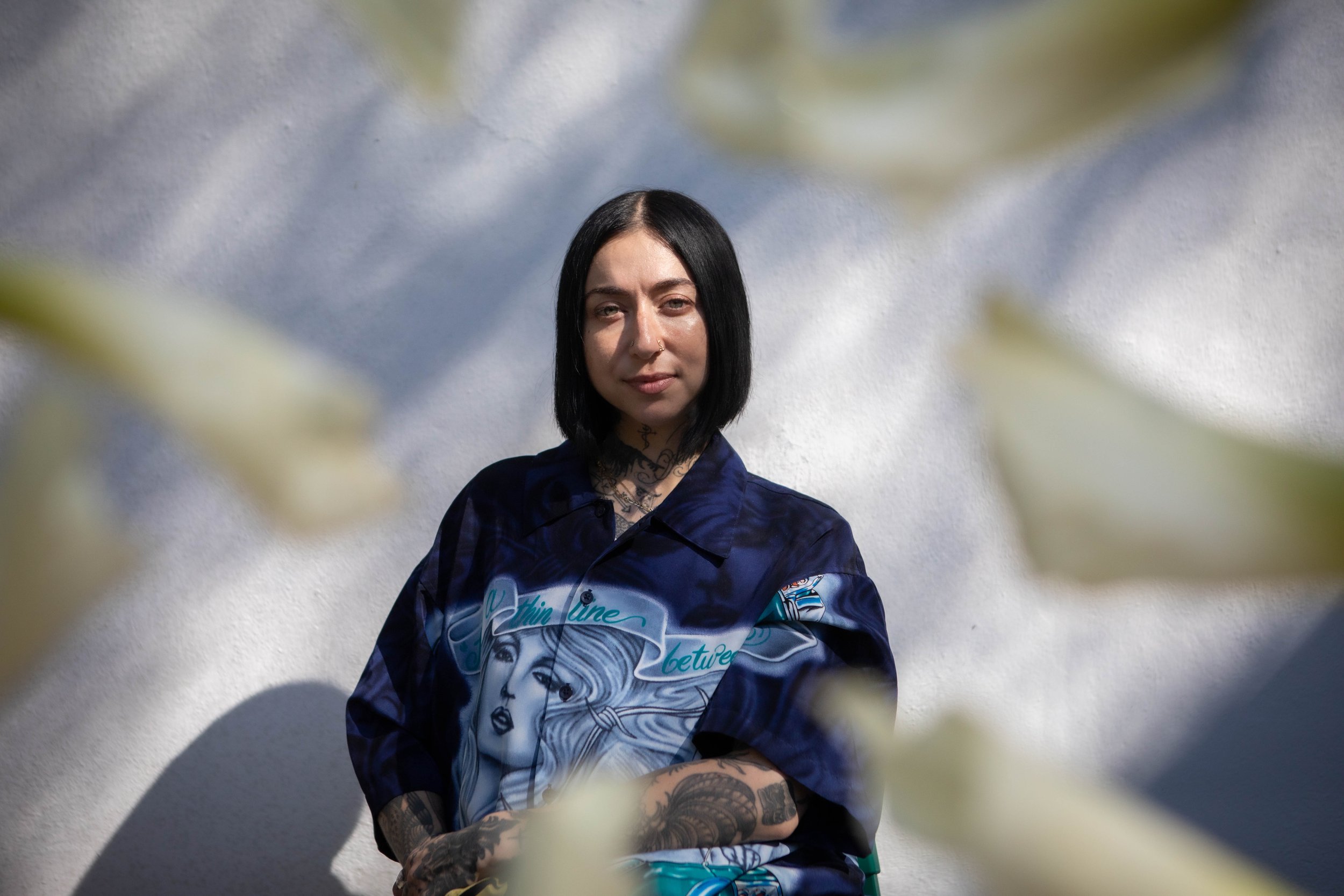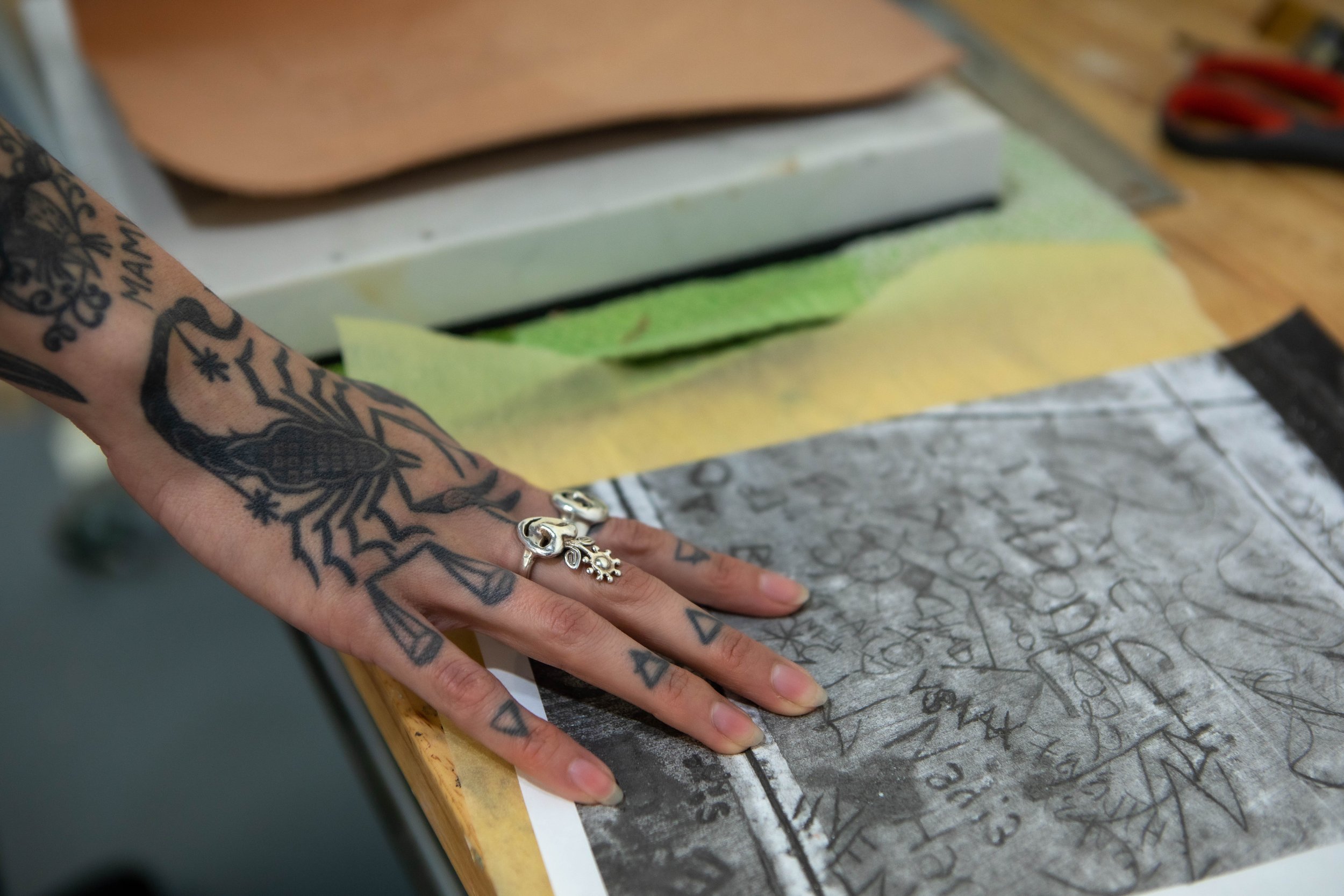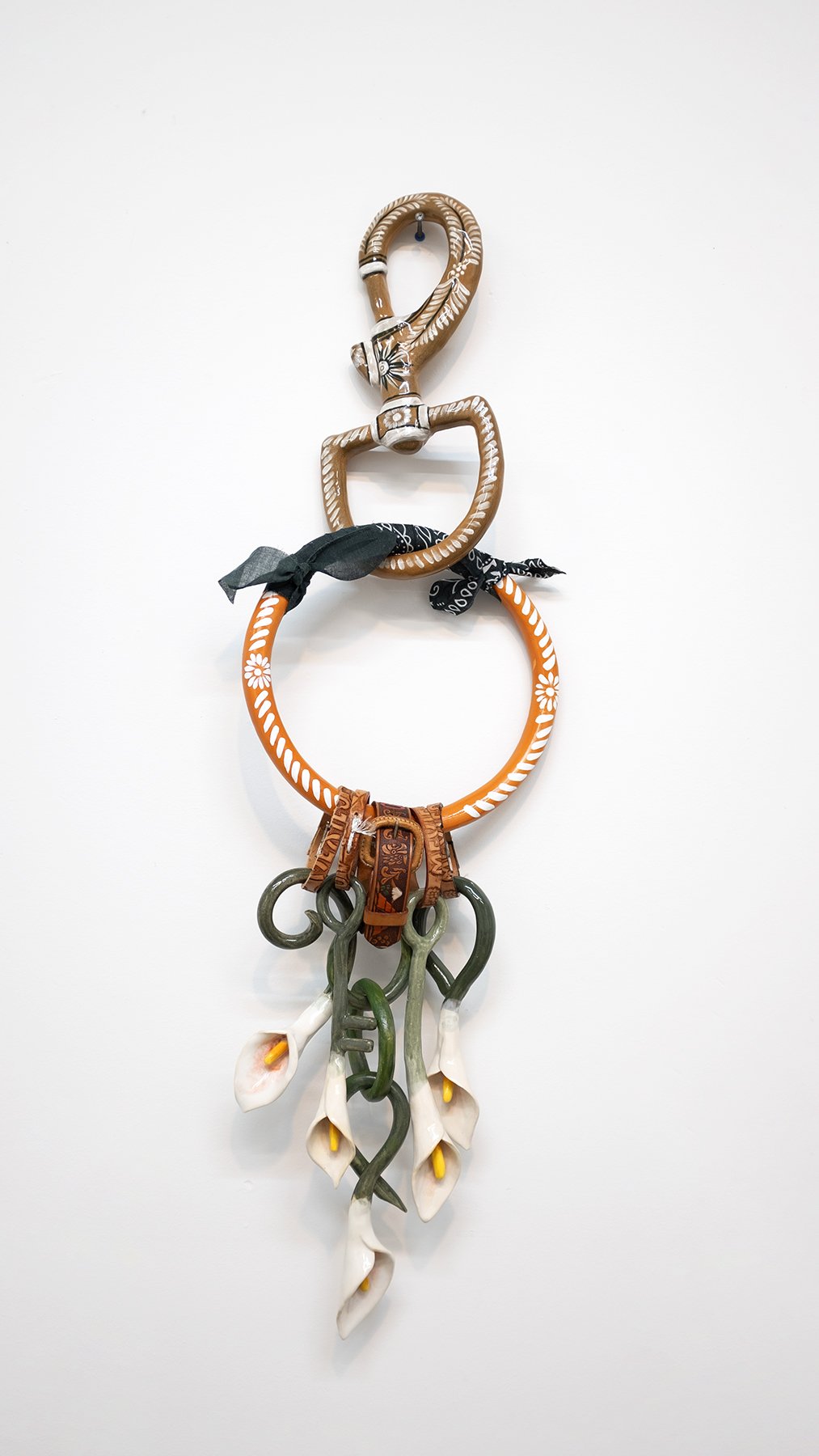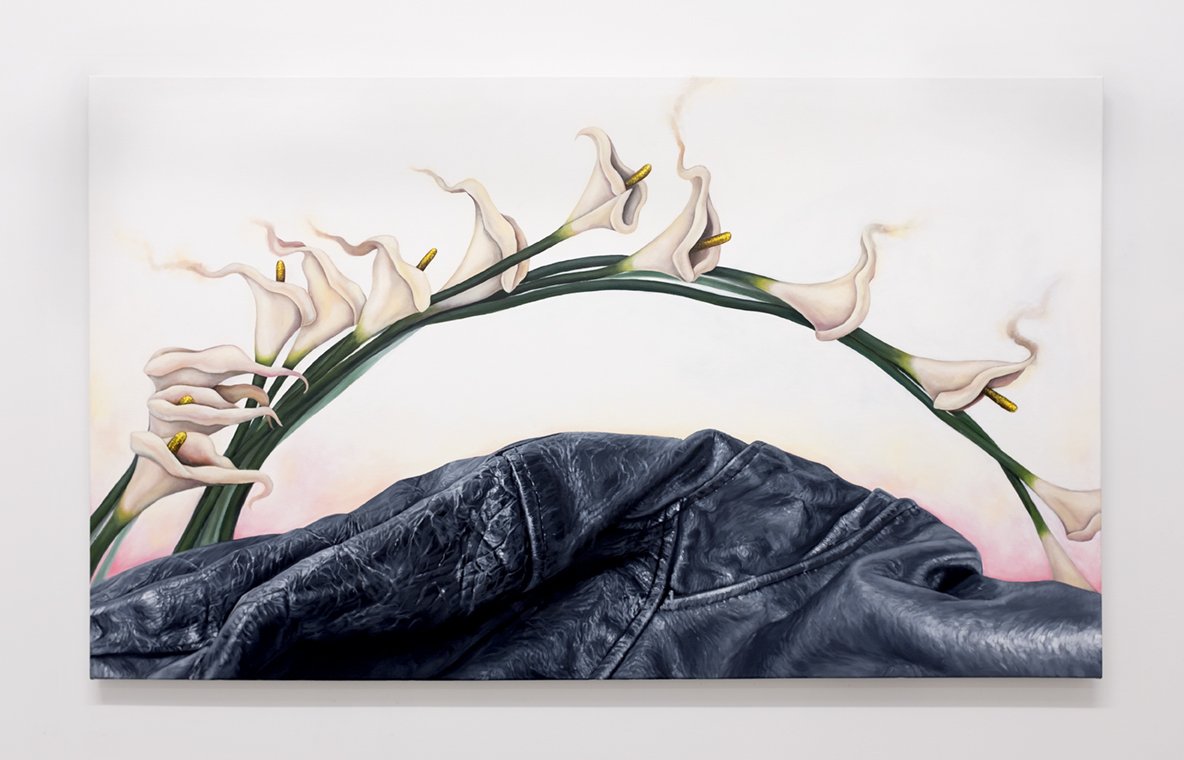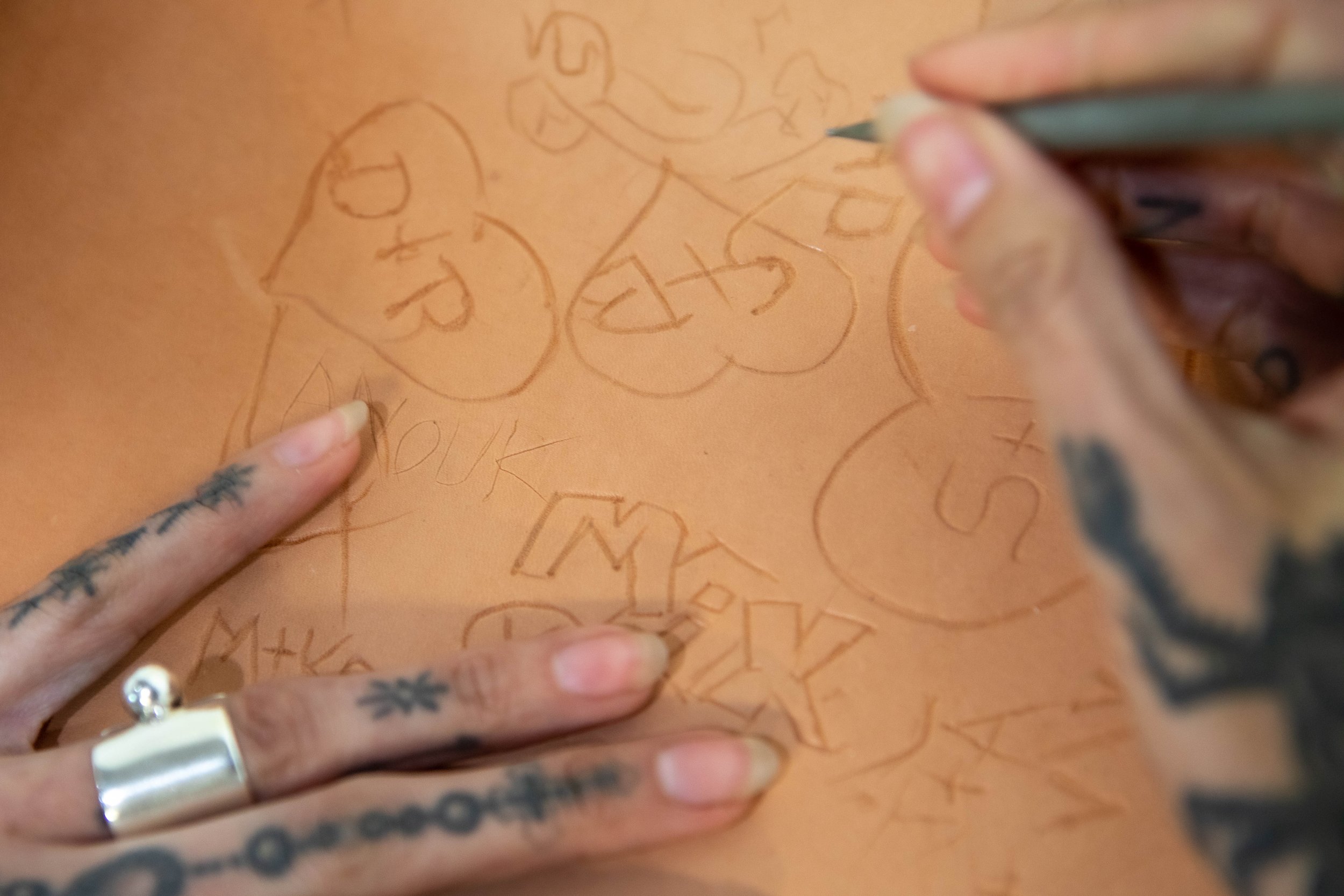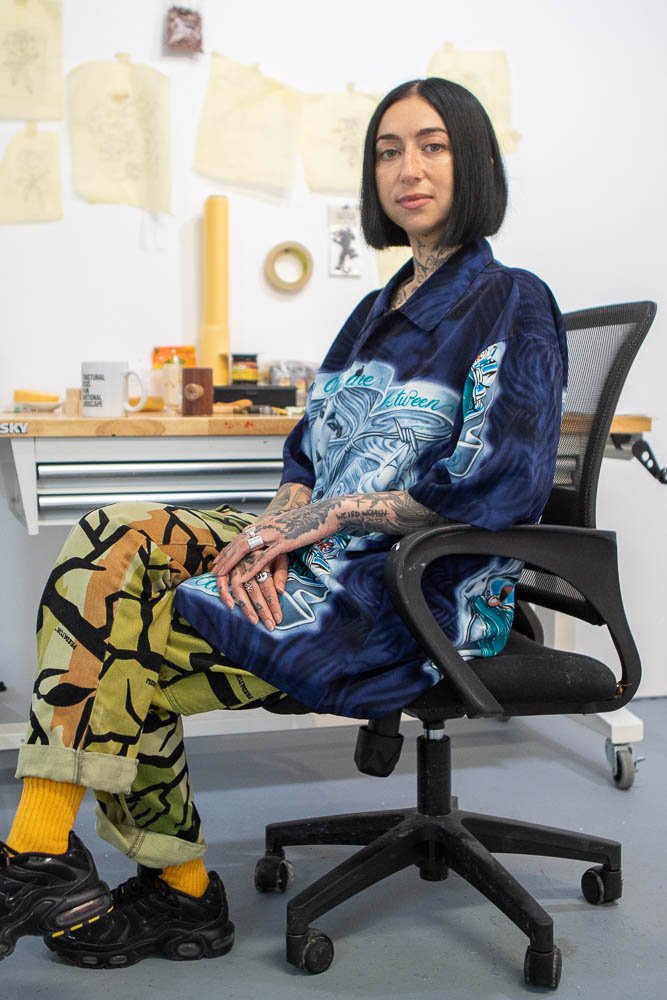February 2023
Tamara Santibañez
Film directed by Alexa Caravia for Fountainhead Arts
Tamara Santibañez uses a variety of media—from sculpture to video to painting—to raise questions about how we form conceptions of ourselves, how language can codify power dynamics, and how objects can help people draw associations.
“It's nice to feel like I can revisit the same idea in multiple mediums and see how an image functions differently,” Santibañez said. “I like to be intentional in the different components of a piece. For example, if I'm making a keychain sculpture, I can do all the leather pieces myself rather than having to source them somewhere and can just be really specific about what they look like.”
This sense of intentionality is omnipresent in Santibañez’s oeuvre. In addition to their visual arts practice, the multimedia creator also studies oral history, and recently received a degree in it from Columbia University. Santibañez’s dedication to scholarship is clear in their practice, and their pieces tell nuanced stories about complicated subjects by including voices from a plurality of perspectives. One example of this is their book Tattooing as Liberation Work (2021), which discusses the power dynamics and history of tattooing.
“I've been thinking about access,” Santibañez said. “I’ve also been thinking about complicity in an era of representation or an era where certain marginalized identities are considered to be an asset in new ways.”
In addition to their experience in oral history and writing, Santibañez remains committed to making objects. The artist uses their visual practice to raise questions about how we ascribe meaning to accessories and patterns, and certain motifs such as Callalilies appear frequently in their work.
“I like to maintain that sense of openness and ambiguity,” Santibañez said. “I never want to feel like I'm dictating to the viewer what they shouldn't be experiencing. And so I try to embed layers of references and images; I try to leave enough room for the person to have their own conclusions, and hopefully to generate some of their own questions or problems.”
During their experience at the residency, Santibañez took the time to work through different aspects of their practice that they hadn’t experimented with in years.
“When I was at Fountainhead, I was pretty much doing all leather, working and drawing on leather,”Santibañez said. “Which is a practice I've had for a while, but I hadn't really worked in it in a few years, partially from not having a studio space because it's a lot of hammering.”
Words by Isis Davis-Marks
